By 1820, technological discoveries brought new features to opaline objects. During this time, Jean-Baptiste Desvignes found a way to paint on opaline crystal and glass. He used only vegetable-based colors that he affixed to the opaline crystal. The tones, always matte, were limited to dark blue and red. The gilding dominated, using forms of linear palmettes, flowers, and garland patterns. Desvignes decorated in Gothic style as well as created small, illustrative scenes inspired by the fables of La Fontaine, delicately colored in blue, soft green, ocher, purple, and gold or silver dots. The sets by Jean-Baptiste Desvignes ran from 1820 until approximately 1826. Afterward, his wife and his two collaborators, Vincent and Blancheron, continued using the same formulas and motifs to decorate opal that came primarily, it seems, from the Bercy crystal manufacturer, founded in 1827.
Dim: D 4,5 in / H 7,7 in.
Circa 1820-1830.
Bibliography:
Musée des Arts décoratifs. Paris.
Y. Amic, L'opaline française au XIXème siècle, Paris, 1952, ed. Gründ;
Edith Mannoni, Opalines, Paris, Editions Ch. Massin, s. d., p. 31.


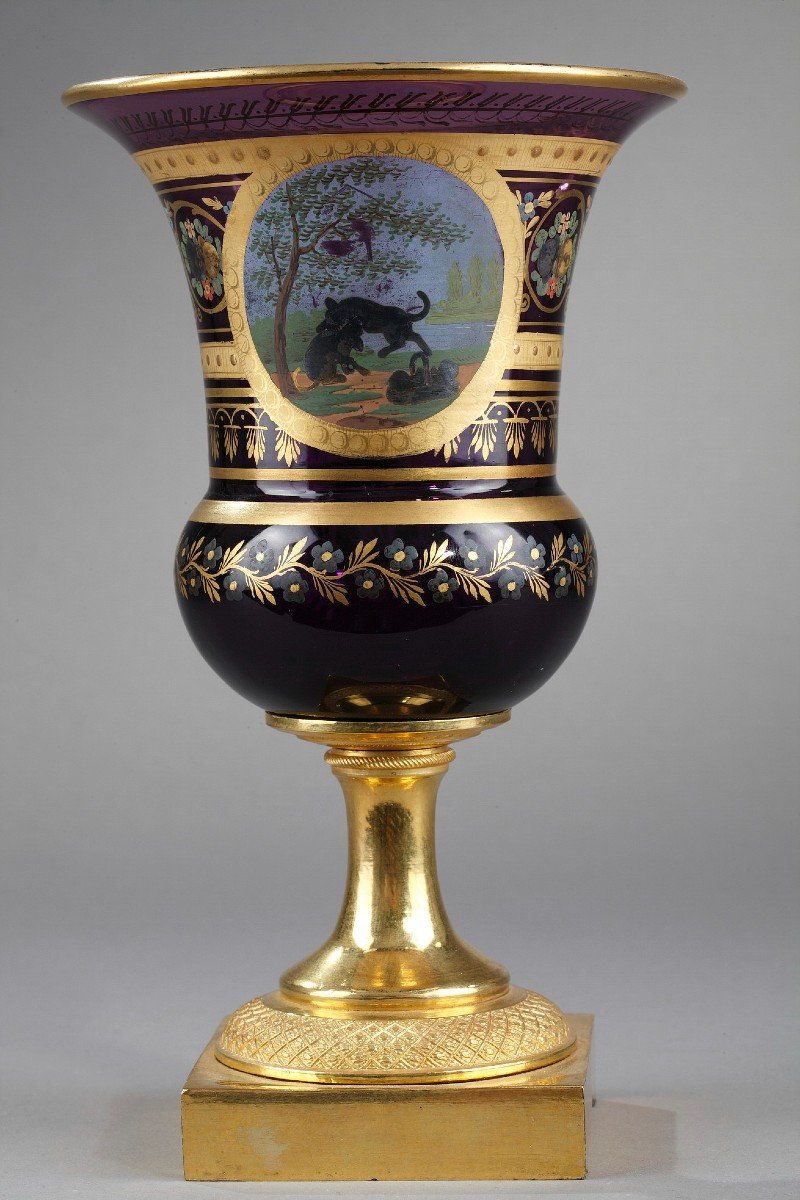
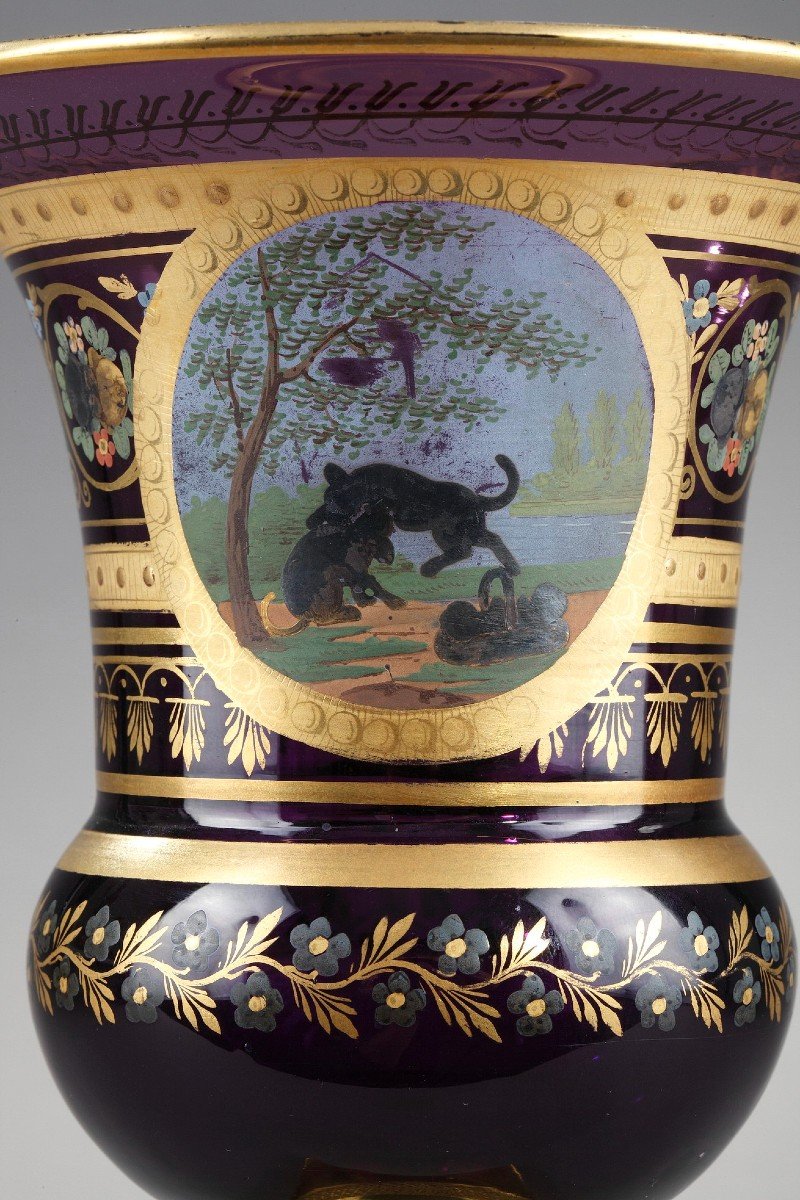
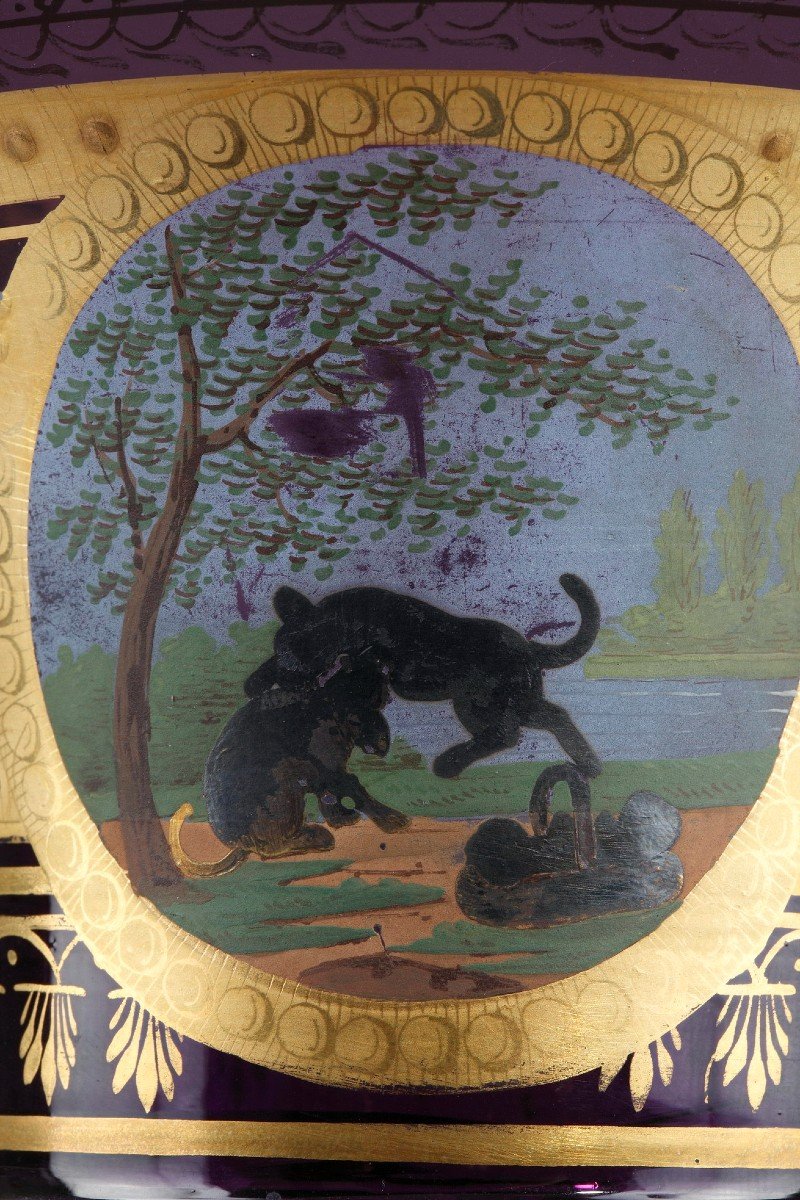
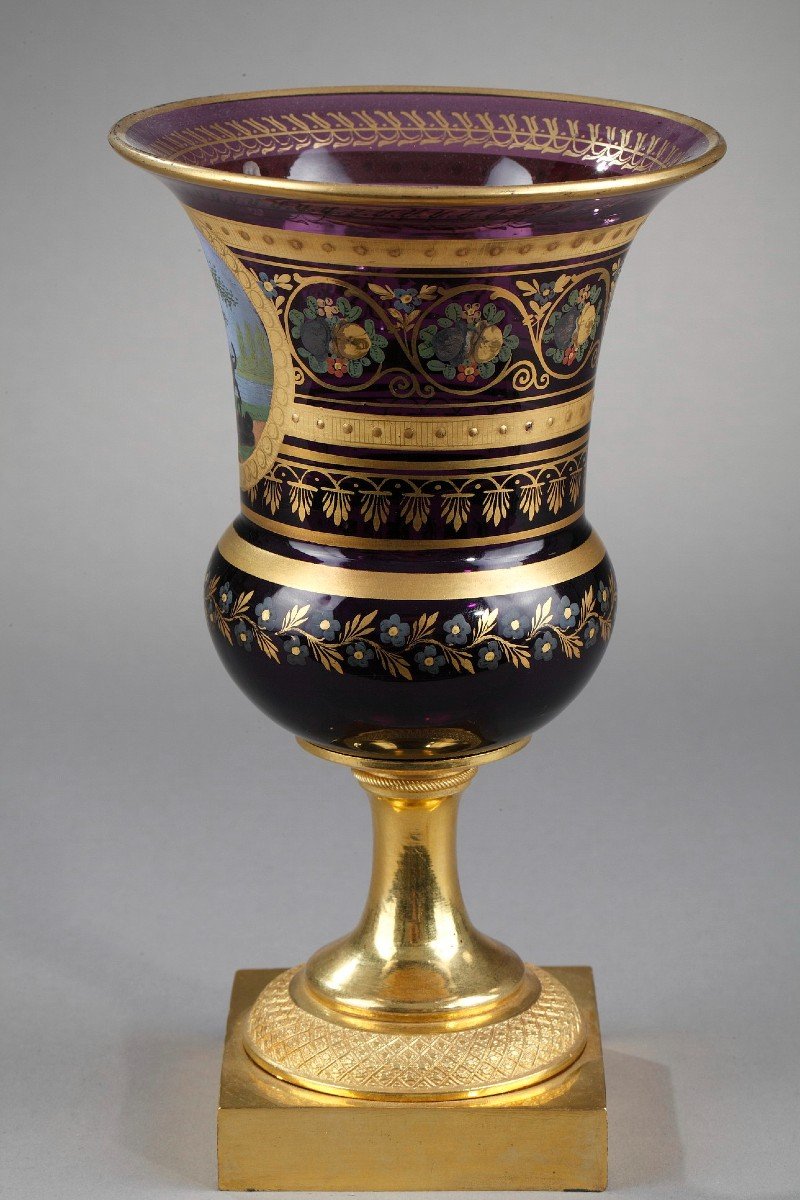
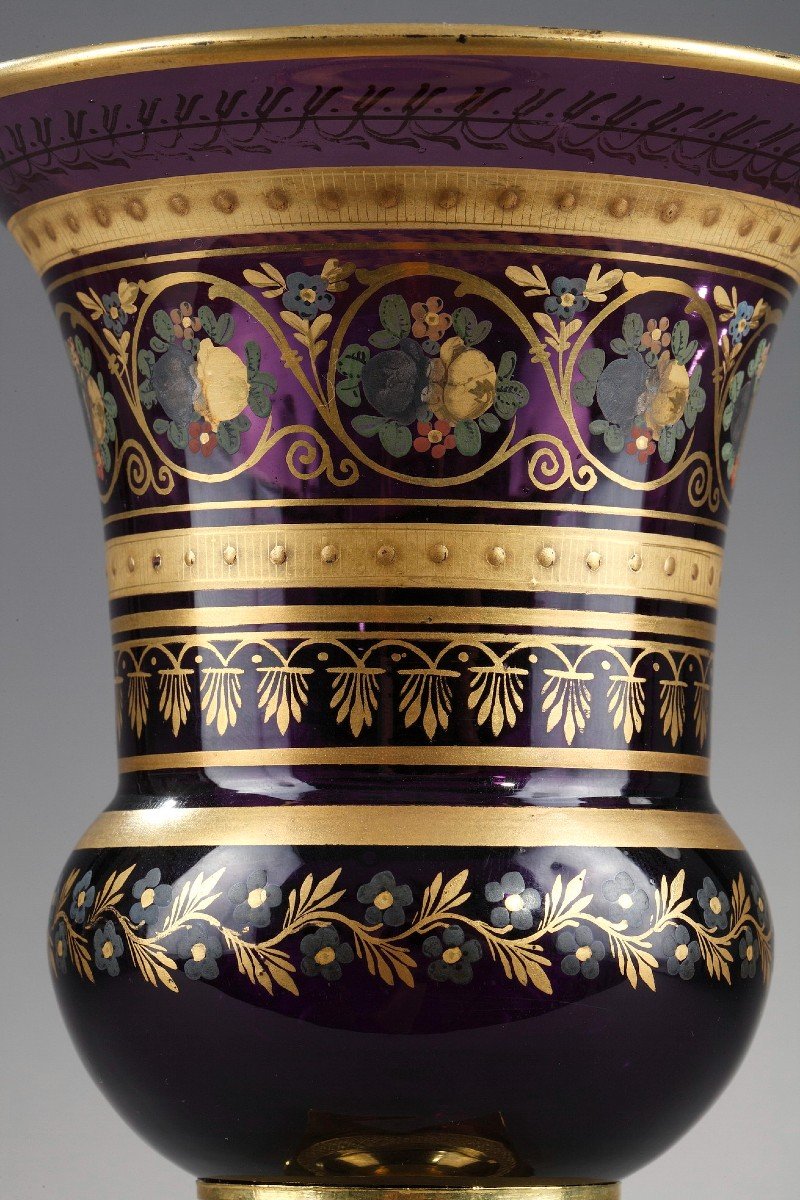
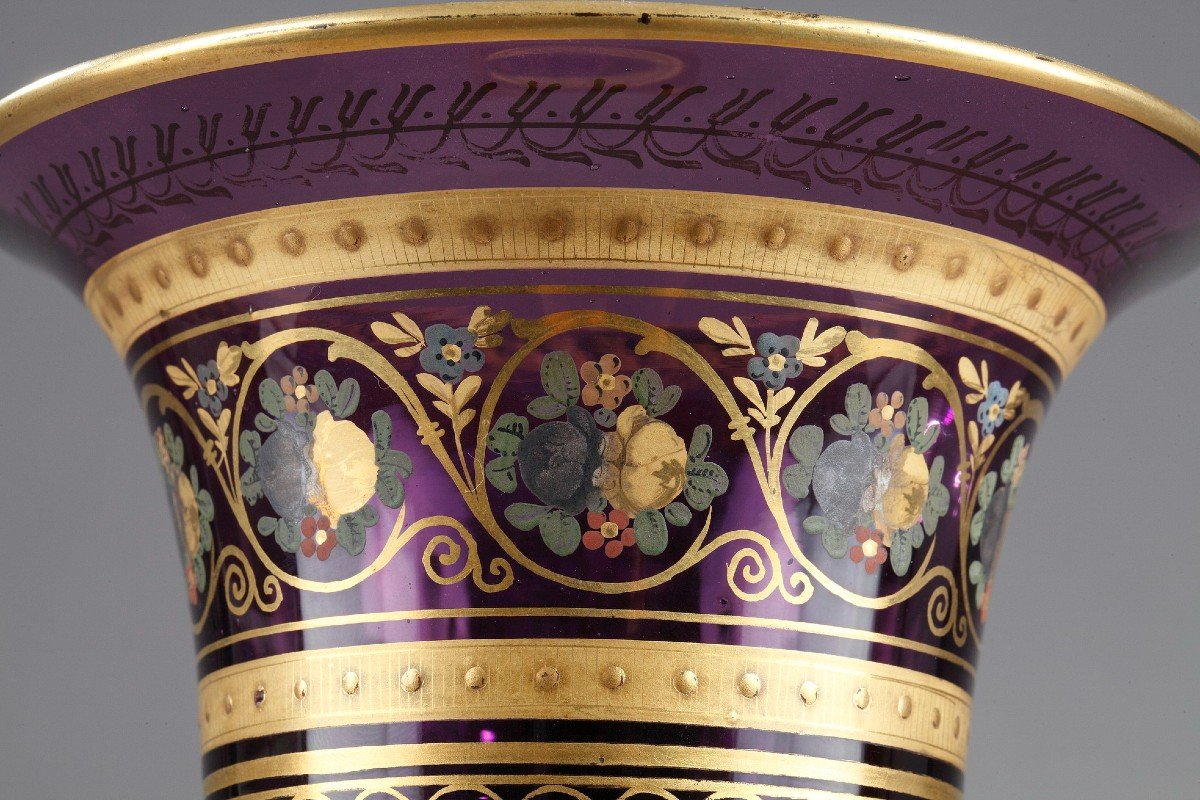
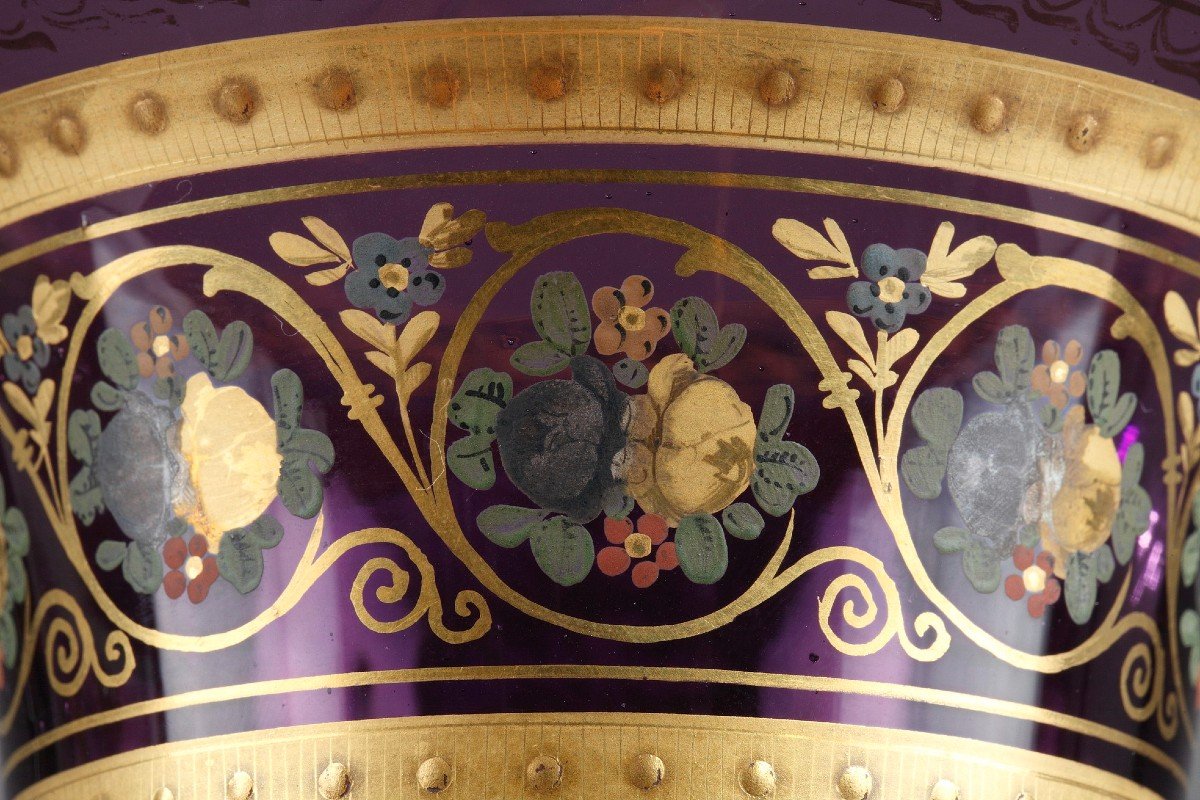
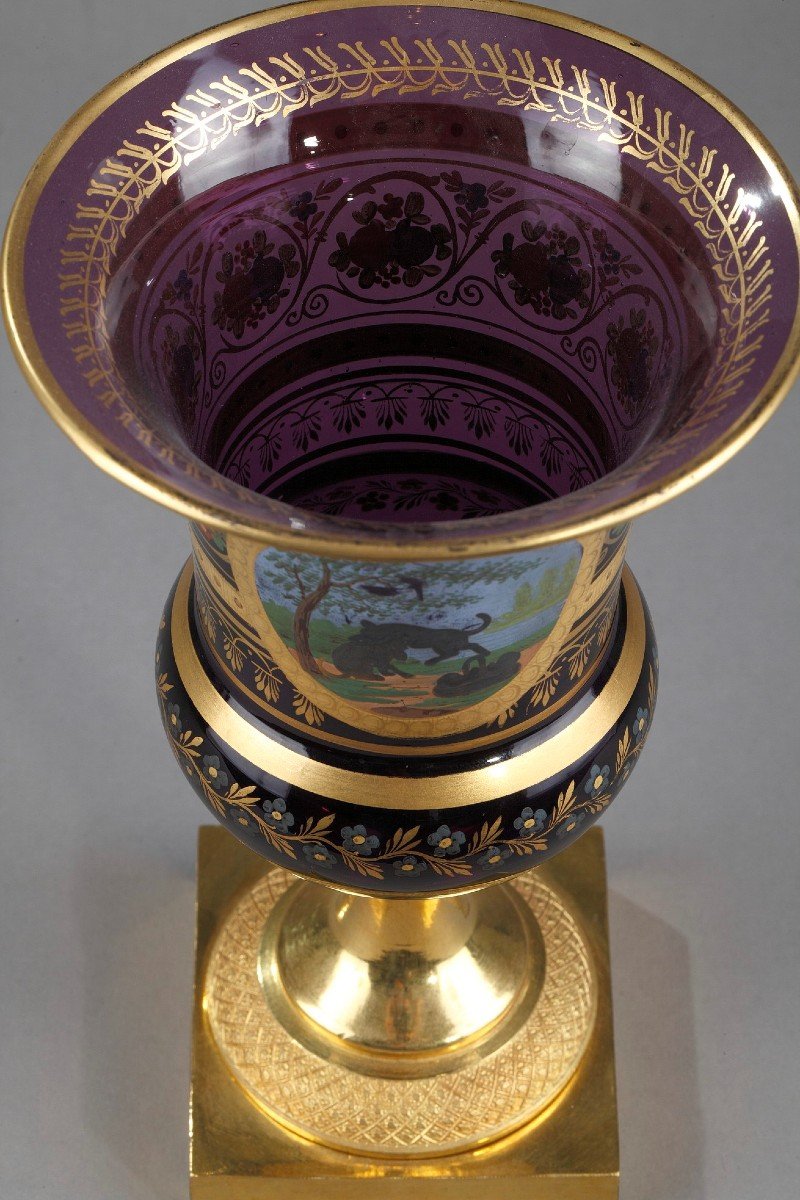
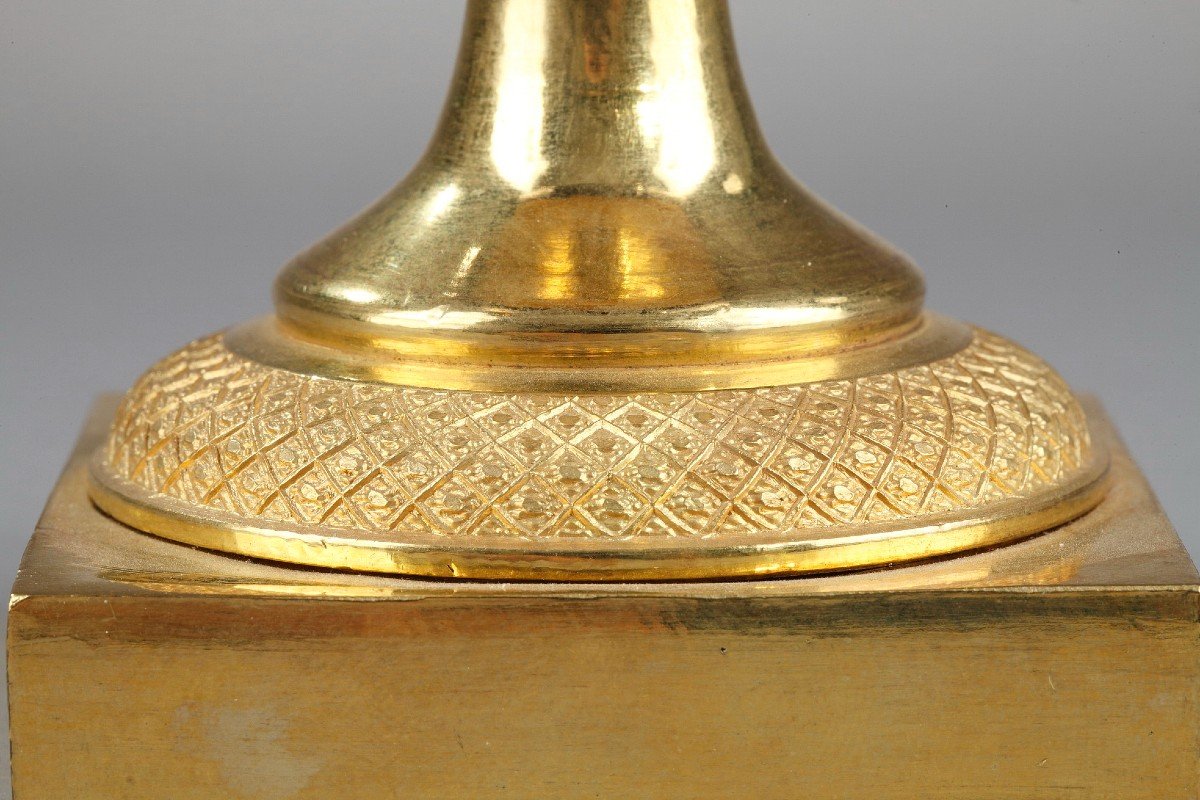
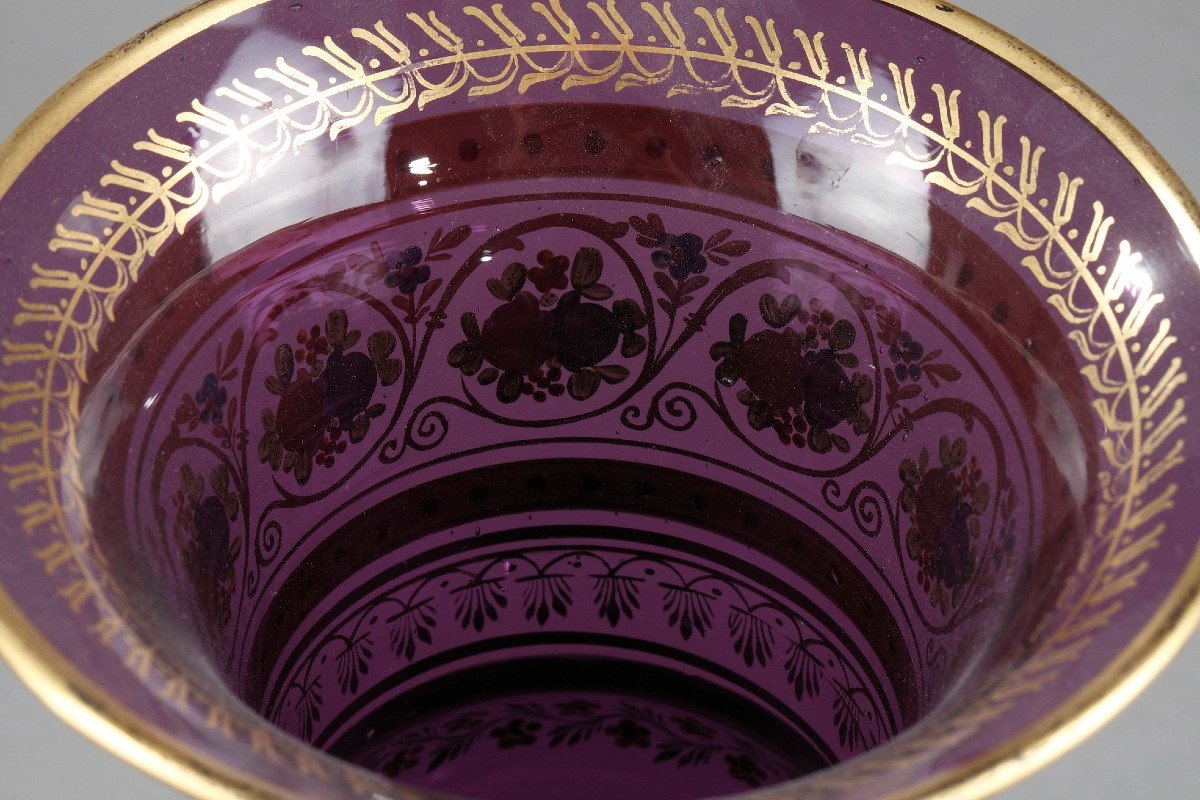
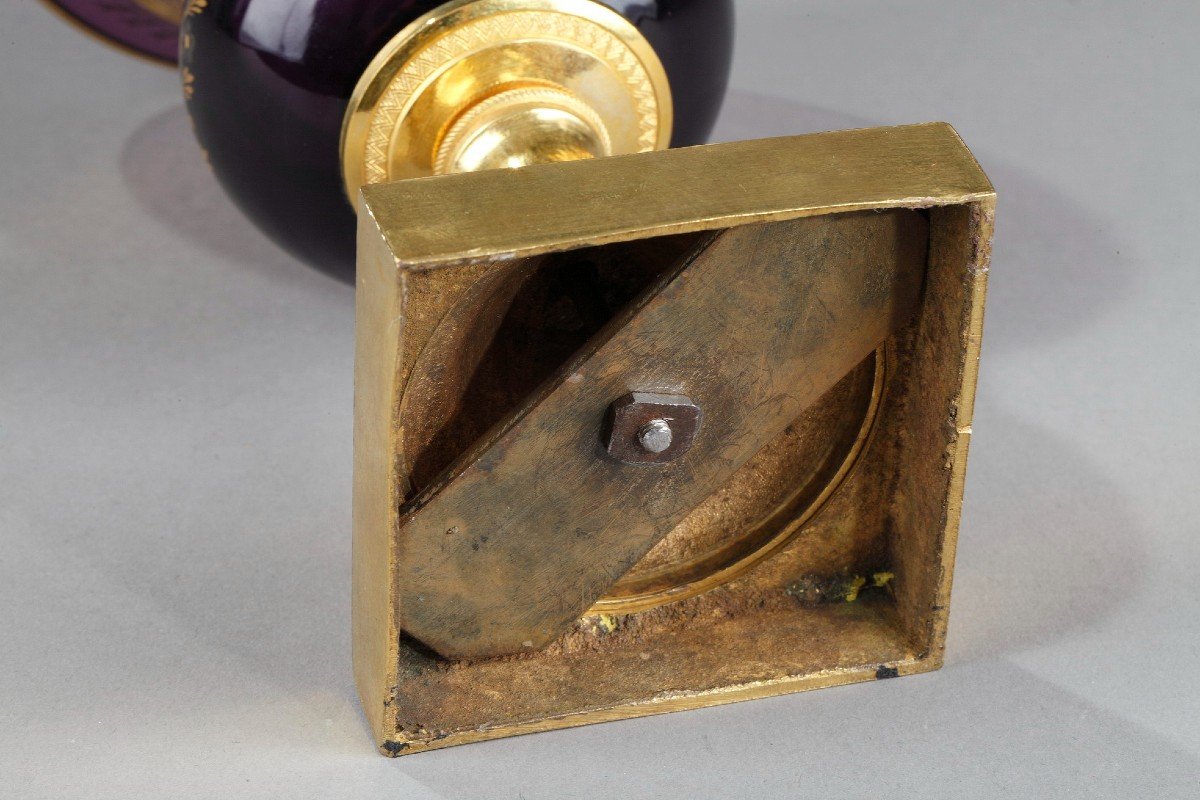












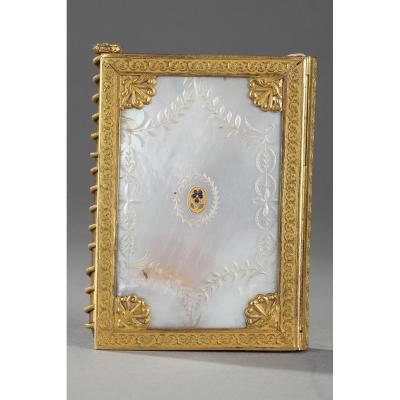
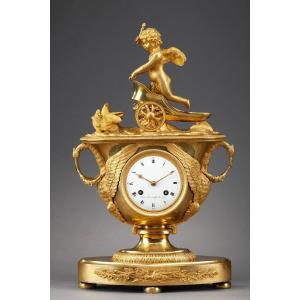
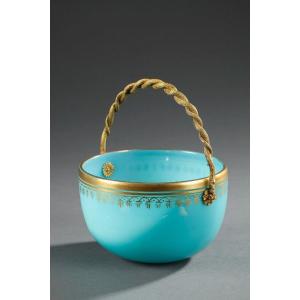



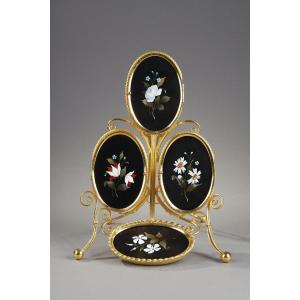


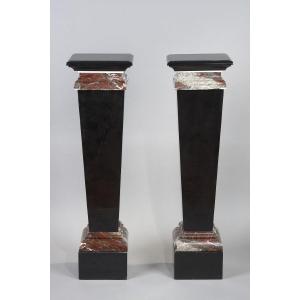
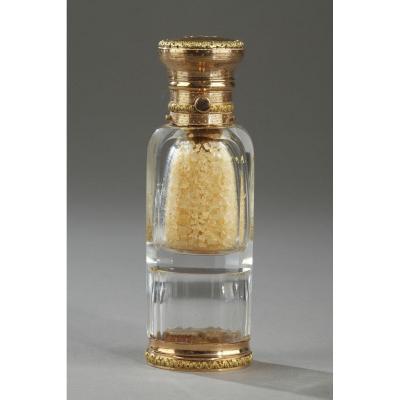
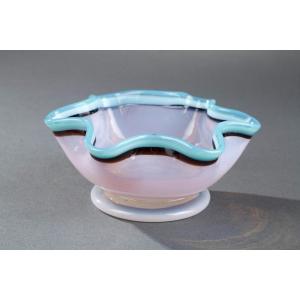
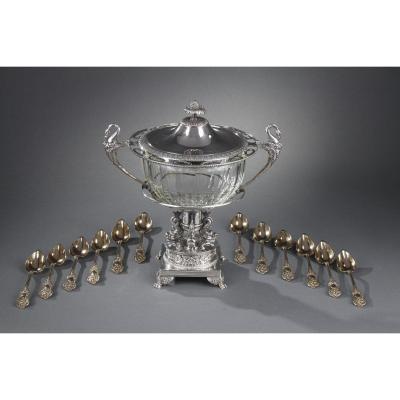

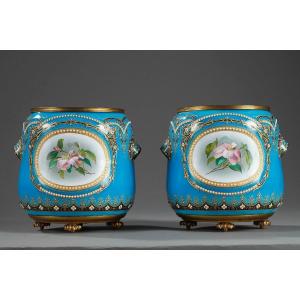
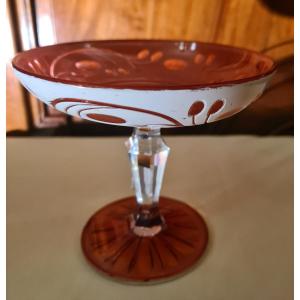
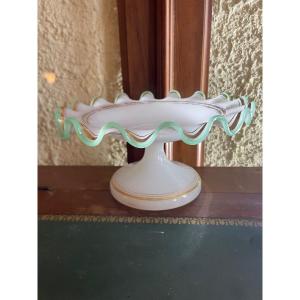





 Le Magazine de PROANTIC
Le Magazine de PROANTIC TRÉSORS Magazine
TRÉSORS Magazine Rivista Artiquariato
Rivista Artiquariato